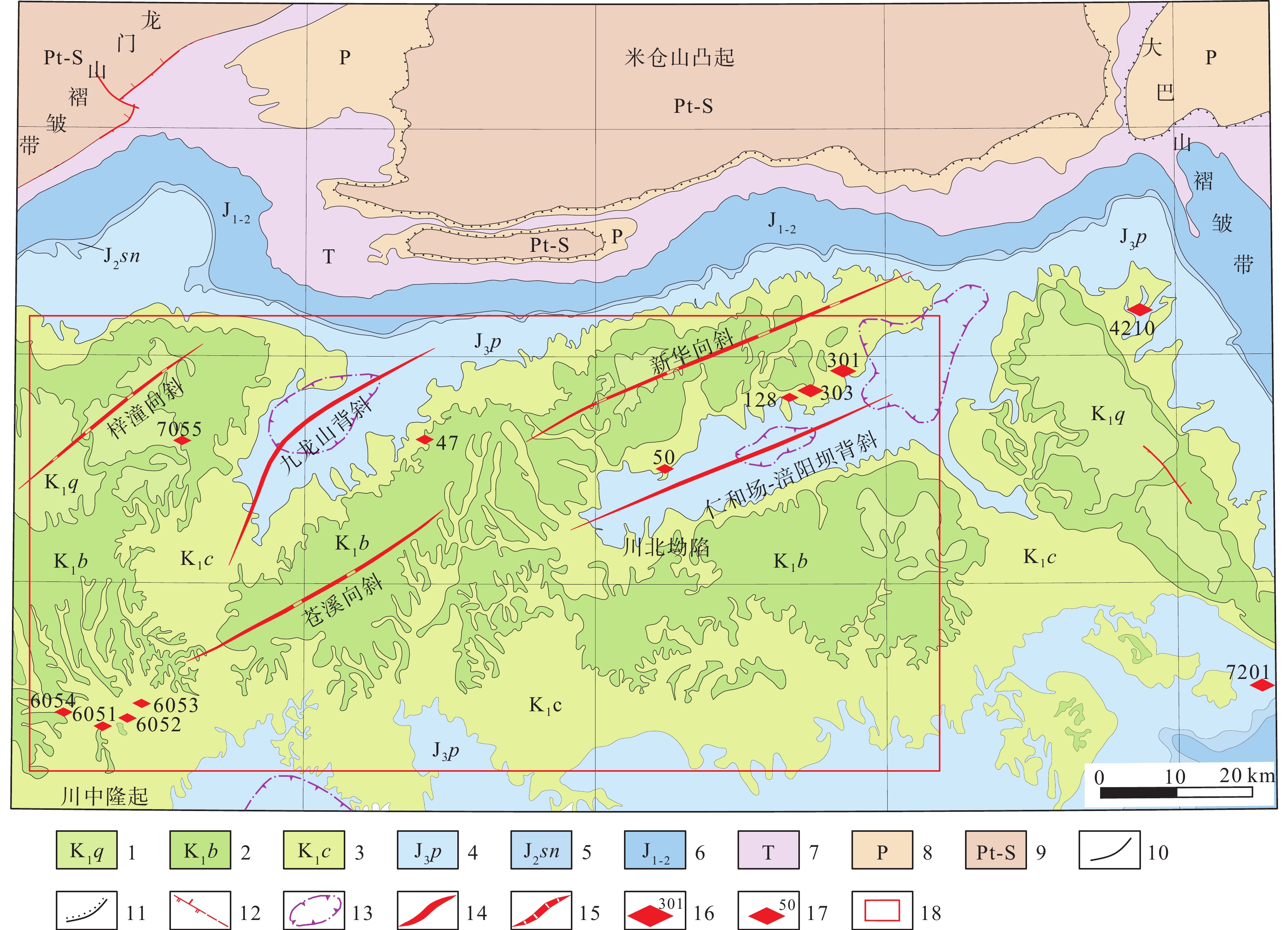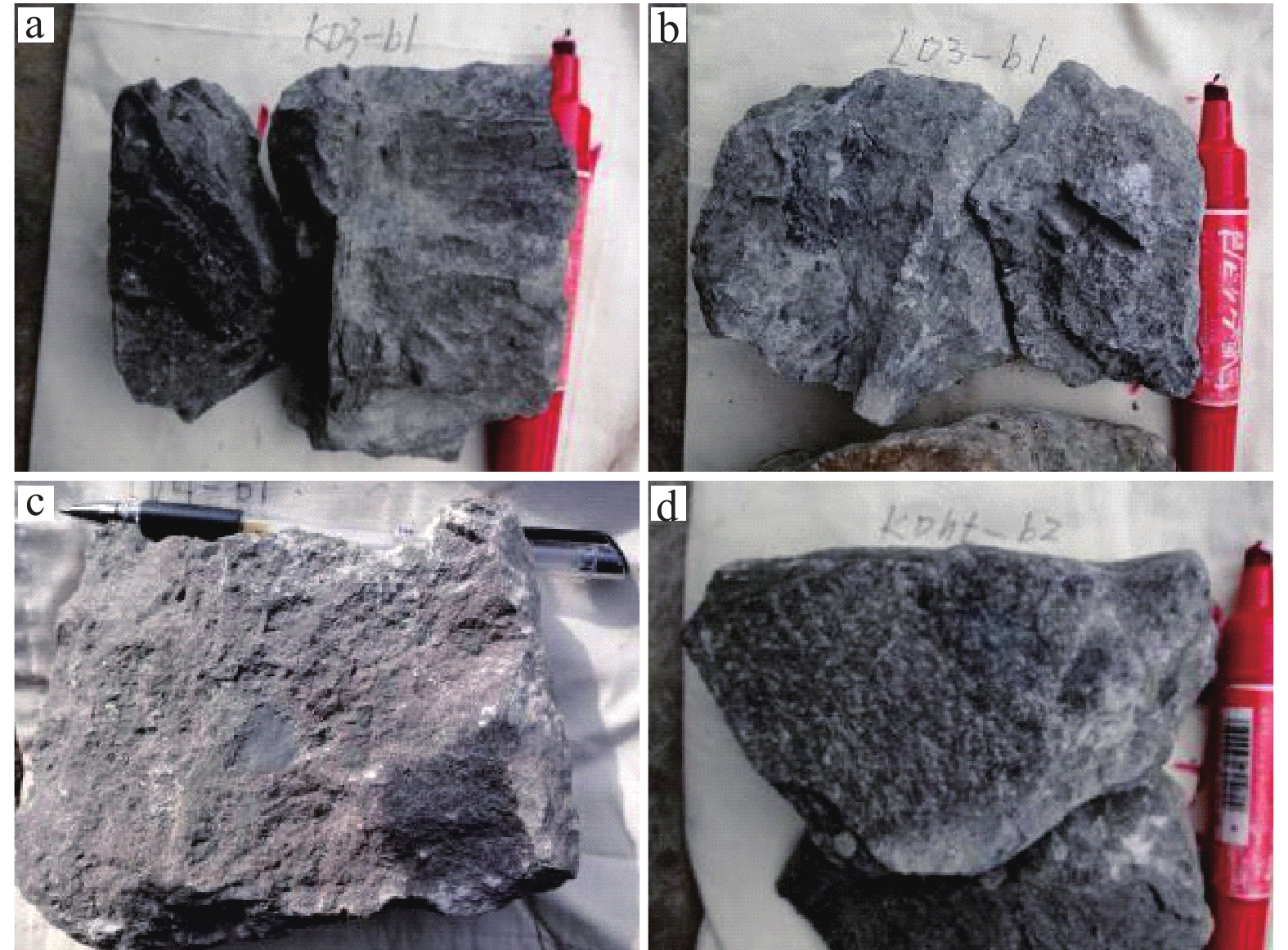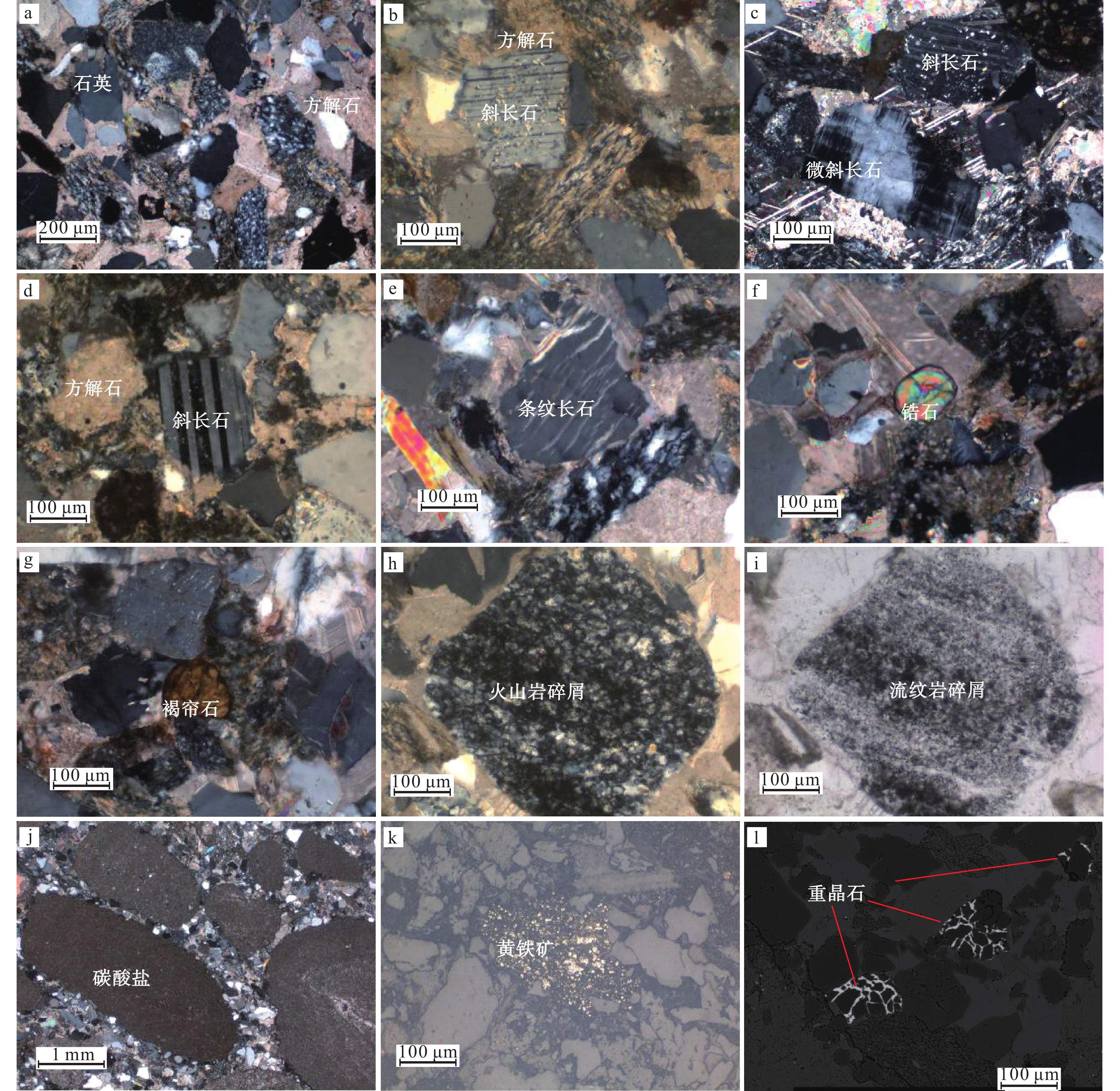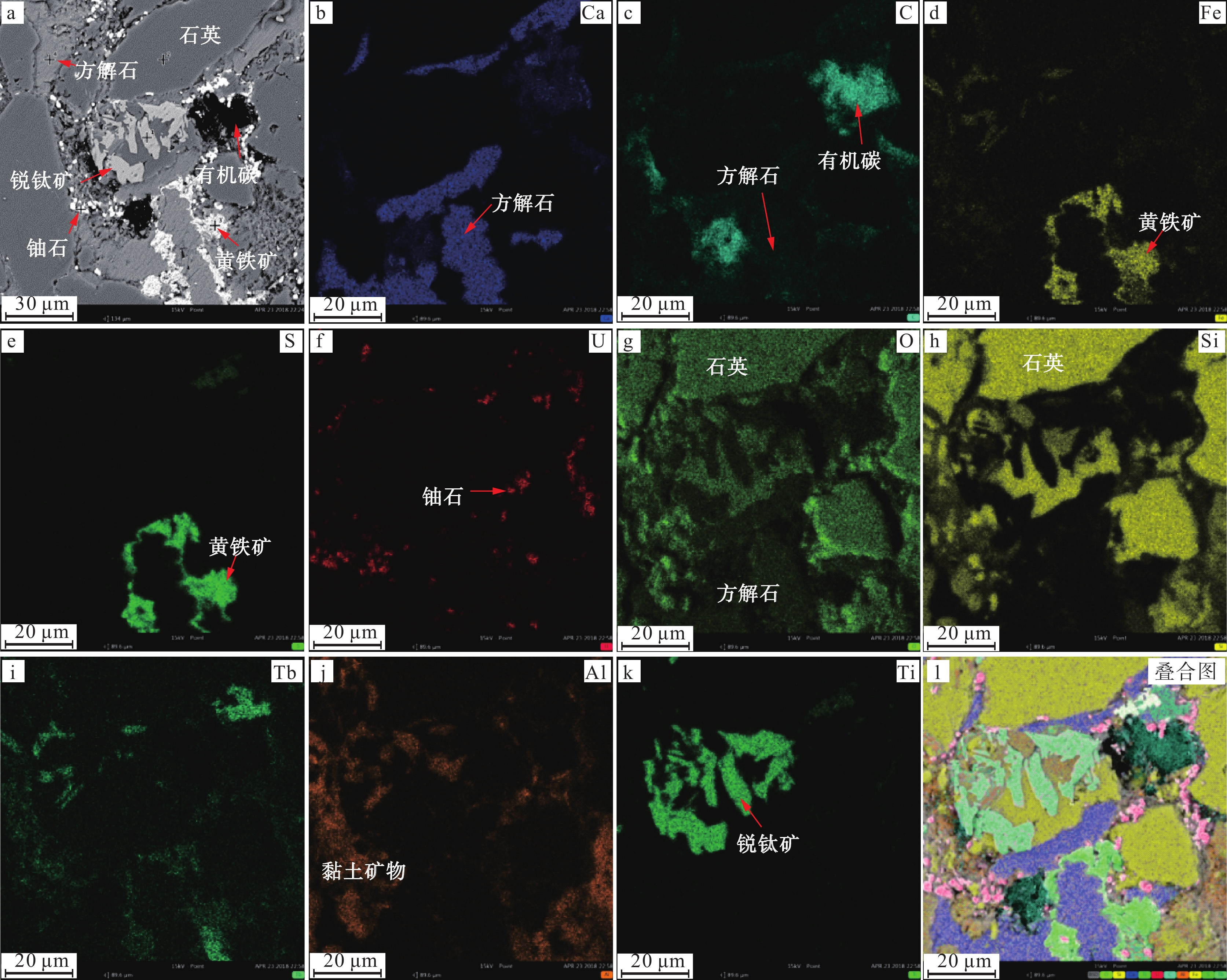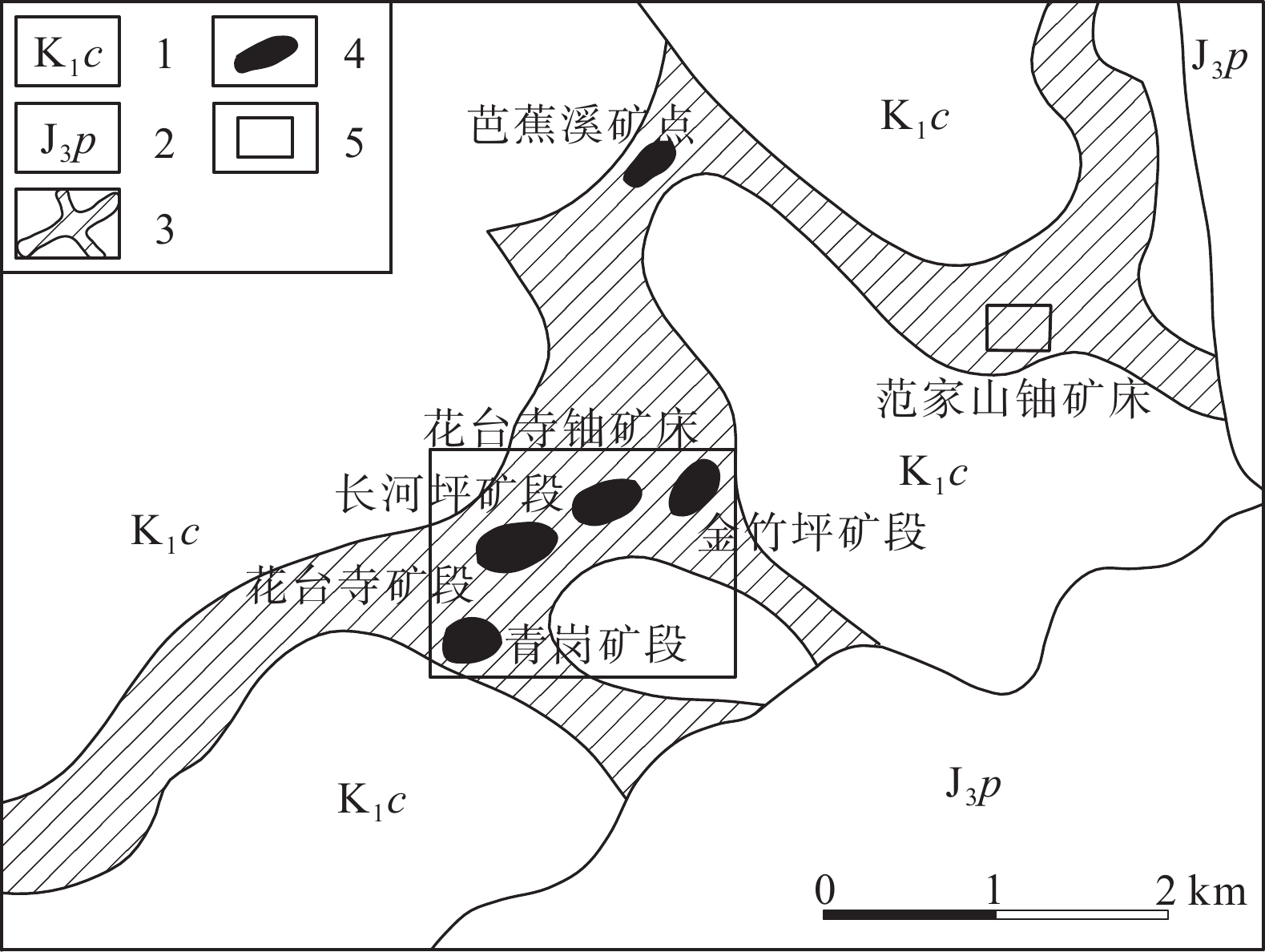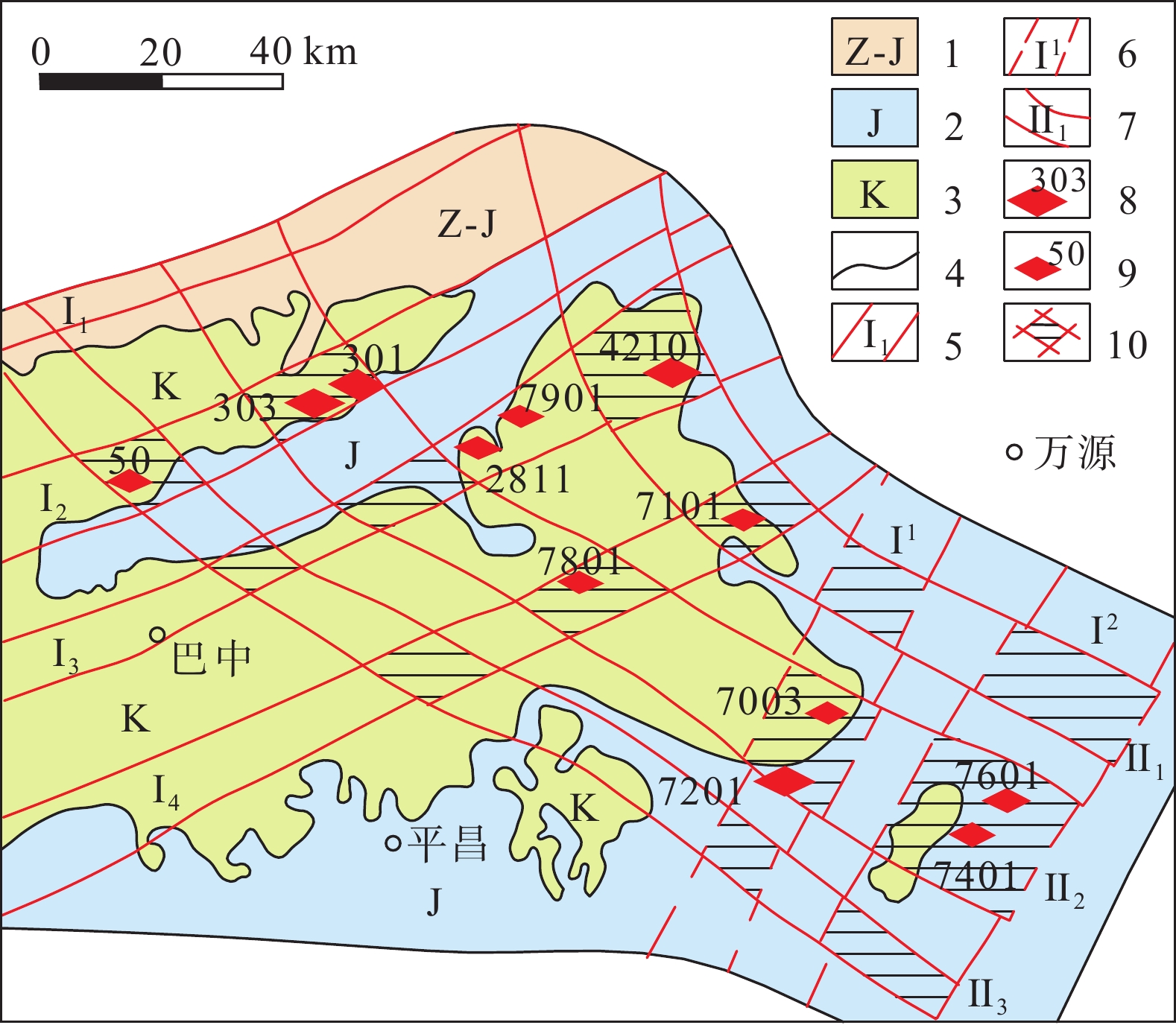Petrological characteristics and origin of the sandstone−type uranium deposits in the northern Sichuan Basin
-
摘要:
研究目的 铀资源是中国重要的战略资源和能源矿产,为更好地勘探和开发四川盆地北部砂岩型铀矿,有必要深入了解其地质特征和成矿模式。
研究方法 本文通过野外调查、岩矿鉴定和地球化学分析研究了砂岩型铀矿的岩石学特征,分析了其成矿过程。
研究结果 含矿主岩主要为下白垩统苍溪组钙质胶结中—细粒砂岩和砾岩。铀以自生铀矿物的形式存在,铀矿物主要为铀石,呈他形、半自形和自形柱状。
结论 米仓山铁船山组变质酸性火山岩和花岗岩为盆地砂岩型铀矿的形成提供了初始铀源。铀在水溶液中以碳酸铀酰离子的形式迁移,富含有机质和黄铁矿的沼泽和停滞水还原环境破坏了碳酸铀酰离子,使铀元素以沉积成岩为主局部叠加后生富集作用成矿。
Abstract:This paper is the result of mineral exploration engineering.
Objective Uranium resources are China's important strategic resources and energy minerals. The thorough understanding of geological characteristics and metallogenic models of sandstone–type uranium deposits in the northern Sichuan Basin is to the benefit of exploration and development.
Methods The petrological characteristics of sandstone–type uranium deposits are studied through field investigation, rock and mineral identification and geochemical analysis, and the mineralization process is analyzed.
Results The ore–bearing rocks are mainly the calcareous cementation medium–fine–grained sandstone and conglomerate of the Lower Cretaceous Cangxi Formation. Uranium exists in the form of authigenic uranium minerals. Uranium minerals are mainly coffinite, which are in xenomorphic, euhedral and hypautomorphic granular.
Conclusions The metamorphic acidic volcanic rocks and granites of the Tiechuanshan Formation in Micangshan provided the initial uranium source for the formation of sandstone–type uranium deposits in the basin. Uranium migrates in the form of carbonic acid containing uranyl ions in the aqueous solution. The reductive environment of swamps and stagnant water rich in organic matter and pyrite destroys the carbonic acid containing uranyl ions, causing uranium to precipitate and accumulate in the primary diagenesis stage and secondary epigenesis stage.
-

-
图 1 研究区大地构造位置图
1 Figure 1.
图 10 四川盆地东北部断裂构造分布及构造控矿示意图(据陶卫中, 1989修改)
Figure 10.
表 1 样品采取位置及分析鉴定
Table 1. Sampling position and analysis identification
样品编号 采样位置 铀含量/% 铀矿石品级 分析类型 KD3–b1 301铀矿床坑道KD–3坑口铀矿体露头 1.400 富矿石 电子探针、扫描电镜 LD3–b1 128铀矿点坑道KD–2坑口铀矿体露头 0.091 贫矿石 — LD4–b1 128铀矿点坑道KD–3坑口铀矿体露头 0.286 普通矿石 电子探针 KDht–b2 50铀矿点坑道KD–1铀矿体 0.522 富矿石 电子探针、扫描电镜 注:铀矿石品级,富矿石≥0.3%;普通矿石0.1%~0.3%;贫矿石<0.1%。 表 2 铀矿石扫描电镜能谱分析结果(%)
Table 2. Scanning electron microscopy energy spectrum analysis results of uranium ore (%)
编号 测点 U O Si Al Ti C Fe Ca Na K Mg N P S Pb Tc 总计 矿物名称 KDht−b2 b2−1 1 5.39 1.16 5.79 8.7 76.9 2.06 100.00 方铅矿 2 72.52 16.42 6.55 1.3 1.88 1.33 100.00 沥青铀矿 b2−2 1 5.78 1.58 3.05 9.98 77.78 1.83 100.00 方铅矿 2 61.24 24.22 8.46 1.86 1.77 1.72 0.72 99.99 铀石 b2−3 1 46.61 4.34 2.61 39.47 1.9 2.43 0.65 2.01 100.02 钛铁矿 2 74.76 17.46 4.38 0.7 1.05 1.31 0.34 100.00 沥青铀矿 3 54.99 43.22 1.79 100.00 石英 4 36.14 1.85 62.01 100.00 方解石 b2−4 线扫描 21.21 42.09 20.61 2.35 4.63 1.31 2.77 2.95 2.07 99.99 铀石 b2−
COXEM−
1126 25.62 43.03 9.29 2.27 13.02 1.68 2.27 1.82 1.01 100.01 铀石 27微区 19.63 38.10 12.36 4.85 14.85 5.09 1.80 0.70 2.61 99.99 铀石 KD3−b1 b1−1 1 52.18 29.13 9.84 2.53 1.85 1.04 0.99 0.93 0.61 0.51 0.39 100.00 铀石 2 48.27 0.69 2.33 47.29 1.41 99.99 方解石 3 54.92 40.61 4.46 99.99 石英 4 47.57 31.13 7.67 4.19 2.03 3.47 0.88 2.77 0.29 100.00 铀石 b1−2 1 14.87 2.24 1 4.77 35.37 0.89 40.86 100.00 黄铁矿
(部分褐
铁矿化)b1−3 1 43.12 53.74 2.72 99.58 锐钛矿 2 53.53 43.41 3.06 100.00 石英 3 9.39 4.93 36.83 48.85 100.00 黄铁矿 4 41.89 2.71 55.4 100.00 方解石 5 69.97 21.61 5.79 0.93 1.24 0.46 100.00 铀石 b2−5 b1−3的
面扫描3.91 49.07 21.56 3.09 6.37 3.03 2.99 7.56 2.41 99.99 表 3 含铀砂岩硅酸盐分析结果(%)
Table 3. Silicate analysis results of uranium−bearing sandstone (%)
样号 LD2-b1 KD1-b2 铀异常岩石平均 LD3-b1 LD4-b1 KDht-b1 KDht-b2 KD3-b1 铀矿石平均 SiO2 46.85 62.36 54.605 42.82 47.18 62.67 55.71 53.78 52.43 Al2O3 8.52 9.61 9.065 5.95 6.81 10.15 7.65 8.11 7.73 Fe2O3 1.37 1.81 1.59 0.935 0.879 1.56 0.871 1.5 1.15 TFe 2.01 2.83 2.42 1.45 1.53 3.2 2 2.94 2.22 FeO 1.36 2.02 1.69 1.03 1.18 2.71 1.79 2.44 1.83 CaO 18.25 7.98 13.115 23.58 20.18 6.85 14.37 11.08 15.21 MgO 1.91 2.11 2.01 1.43 1.47 2.82 1.46 1.64 1.76 K2O 1.89 1.66 1.775 1.06 1.23 1.76 1.27 1.35 1.33 Na2O 1.06 1.7 1.38 1.2 1.23 1.66 1.57 1.41 1.41 TiO2 0.507 0.639 0.573 0.344 0.463 0.597 0.498 0.44 0.47 P2O5 0.102 0.12 0.111 0.077 0.113 0.116 0.176 0.108 0.12 MnO 0.16 0.088 0.124 0.129 0.127 0.067 0.121 0.141 0.12 灼失 17.24 8.9 13.07 20.74 17.93 7.84 12.74 13.64 14.58 H2O+ 2.72 2.66 2.69 1.98 2.06 3.14 2.42 3.1 2.54 总和 103.95 104.49 104.218 102.73 102.38 105.14 102.65 101.68 102.91 铀含量 0.018 0.021 0.01945 0.091 0.286 0.303 0.522 1.400 矿石品级 贫矿石 普通矿石 富矿石 富矿石 富矿石 表 4 铀矿物电子探针分析结果(%)
Table 4. Electron probe analysis results of uranium minerals (%)
样品编号 LD4-b1 KD3-b1 KDht-b2 测点 1 2 1 2 3 1 2 3 Y2O3 / / 0.15 / / / / / SiO2 / 11.78 15.68 13.12 13.43 16.64 13.86 17.27 FeO / / 0.68 0.65 0.46 0.39 0.34 0.57 UO2 57.52 58.32 66.71 69.26 60.52 67.94 72.57 67.6 MgO 0.03 0.08 0.39 0.08 0.08 0.05 0.03 0.08 Na2O 0.1 / / 0.07 / 0.07 / / TiO2 / / / 0.49 0.31 0.62 / 0.28 K2O 0.57 0.19 0.33 0.14 0.19 0.24 0.25 0.23 As2O5 / 0.34 0.06 0.06 / / 0.07 0.04 Al2O3 / 0.06 1.39 0.55 0.95 0.78 0.3 0.93 MnO / / / / 0.08 0.18 / 0.26 ThO2 / / / / / / / / V2O3 15.15 0.18 / / 0.11 0.1 / / CaO 10.4 14.49 0.59 1.03 1.18 1.21 0.84 1.72 Nd2O3 0.5 / 0.37 / / / / / SO3 / / 0.05 / 0.06 / 0.08 / Ce2O3 / / 0.44 0.47 0.18 0.18 0.48 0.18 P2O5 / 0.45 0.94 1.24 0.91 1.63 0.97 1.34 La2O3 / / / / 0.29 / / 0.22 PbO / / 0.31 0.1 10 / 0.41 / Pr2O3 / / 0.07 / / / 0.21 0.11 SnO2 / / / / / / / / ZrO2 / / 0.17 0.1 0.06 / 0.16 0.03 总量 84.27 85.89 88.33 87.36 88.81 90.03 90.57 90.86 矿物 铀石 铀石 铀石 铀石 铀石 铀石 沥青铀矿 铀石 注:“/”表示元素含量低于检测限,未检出。 -
[1] Berner R A, Westrich J T. 1985. Bioturbation and the early diagenesis of carbon and sulfur[J]. American Journal of Science, 285: 3(3): 193−206.
[2] Bonnetti C, Cuney M, Michels R, Truche L, Malartre F, Liu X D, Yang J X. 2015. The multiple roles of sulfate−reducing bacteria and Fe−Ti oxides in the genesis of the Bayinwula roll front−type uranium deposit, Erlian Basin, NE China[J]. Economic Geology, 110(4): 1059−1081. doi: 10.2113/econgeo.110.4.1059
[3] Cai Yuqi, Zhang Jindai, Guo Qingyin, Song Jiye, Fan Honghai, Liu Wusheng, Qi Fucheng, Zhang Minglin. 2015. Outline of uranium resources characteristics and metallogenetic regularity in China[J]. Acta Geologica Sinica, 89(6): 1051−1069 (in Chinese with English abstract).
[4] Goswami S, Upadhyay P K, Saravanan B, Natarajan V, Verma M B. 2019. Two types of uranium mineralization in Gulcheru quartzite: Fracture−controlled in Ambakapalle area and litho−controlled in Tummalapalle area, Cuddapah Basin, Andhra Pradesh, India[J]. China Geology, 2(2): 142−156. doi: 10.31035/cg2018099
[5] Guo Ning, Sun Zexuan. 2017. Types and prospecting direction of sandstone−type uranium deposits in the northern margin of the Sichuan Basin[J]. Geology and Exploration, 53(1): 54−62 (in Chinese with English abstract).
[6] Jin R S, Feng X X, Teng X M, Nie F J, Cao H Y, Hou H Q, Liu H X, Miao P S, Zhao H L, Chen L L, Zhu Q, Zhou X X. 2020. Genesis of green sandstone/mudstone from Middle Jurassic Zhiluo Formation in the Dongsheng Uranium Orefield, Ordos Basin and its enlightenment for uranium mineralization[J]. China Geology, 3(1): 52−66. doi: 10.31035/cg2020002
[7] Li D P, Chen Y L, Wang Z, Lin Y, Zhou J. 2012. Paleozoic sedimentary record of the Xing Meng Orogenic Belt, Inner Mongolia: Implications for the provenances and tectonic evolution of the Central Asian Orogenic Belt[J]. Chinese Science Bulletin, 57: 776−785.
[8] Liu Baojun. 1980. Sedimentary Petrology[M]. Beijing: Geological Publishing House, 60−65 (in Chinese).
[9] Lovley D R. 1993. Dissimilatory metal reduction[J]. Annual Review of Microbiology, 47(3): 263−290.
[10] Lovley D R, Phillips E J. 1992. Reduction of uranium by Desulfovibrio desulfuricans[J]. Applied & Environment Microbiology, 58(3): 850−856.
[11] Lu Chao, Peng Yunbiao, Liu Xinyang, Jiao Yangquan, Yang Jianxin, Chen Fazheng, Shen Kefeng, Li Ronglin. 2013. Sedimentary backgrounds of sandstone−type uranium deposits in western Manite Depression of Erlian Basin[J]. Uranium Geology, 29(6): 336−343 (in Chinese with English abstract).
[12] Pan Chunrong, Mou Ping, Zhong Fujun, Huang Guangwen, Li haidong, Pan Jiayong. 2020. Genesis of chlorite in the Huangsha uranium deposit, middle part of Nanling Mountains and its relationship with uranium mineralization[J]. Geology in China, 47(2): 348−361 (in Chinese with English abstract).
[13] Qidwa H A, Jensen M L. 1979. Methodology and exploration for sandstone−type uranium deposits[J]. Mineralium Deposita, 14(2): 137−152.
[14] Shen Chuanbo, Mei Lianfu, Xu Zhenping, Tang Jiguang. 2007. Architecture and tectonic evolution of composite basin−mountain system in Sichuan Basin and its adjacent areas[J]. Geotectonica et Metallogenia, 31(3): 288−299 (in Chinese with English abstract).
[15] Tao Weizhong. 1989. Control of faulted structure over the sandstone−type uranium deposit in the northeastern part of Sichuan Province[J]. Uranium Geology, 5(2): 86−94 (in Chinese with English abstract).
[16] Watson M P, Hayward A B, Parkinson D N, Zhang Z M. 1987. Plate tectonic history, basin development and petroleum source rock deposition onshore China[J]. Marine and Petroleum Geology, 4(3): 205−225. doi: 10.1016/0264-8172(87)90045-6
[17] Wilkin R T, Barnes H L, Brantley S L. 1996. The size distribution of framboidal pyrite in modern modern sediments: An indicator of redox conditions[J]. Geochimica et Cosmochimica Acta, 60(20): 3897−3912. doi: 10.1016/0016-7037(96)00209-8
[18] Wu Bailin, Sun Bin, Cheng Xianghu, Zhang Wanying, Liu Mingyi, Hao Xin, Liu Chiyang. 2017. Study and prospect for sedimentology of uranium deposit[J]. Acta Sedimentologica Sinica, 35(5): 1044−1053 (in Chinese with English abstract).
[19] Wu Bolin, Xu Gaozhong. 2004. Evolution feature of palaeoclimate and significance of sequence stratigraphy in Suixigou Group in the southwest edge of Turpan−Ham Basin[J]. Journal of East China University of Technology (Natural Science), 27(2): 135−140 (in Chinese with English abstract).
[20] Wu Rengui, Zhu Minqiang, Yu Dagan, Chen Anping. 2002. Analyses of depositional system and studies on metallogenic condition of basal−channel sandstone uranium deposit[J]. Mineral Deposits, 21(Z1): 878−880 (in Chinese with English abstract).
[21] Xiao Z H, Xiong S B, Li C H, Liu Y, Yang Z D, Feng X X, Liu X W. 2020. Types of uranium deposits in central Zhuguang Mountains in Hunan Province, South China and their metallogenic regularity and prospecting directions[J]. China Geology, 3(3): 411−424.
[22] Yang Ruoli, Sun Qunli. 1985. Uranium Deposit[M]. Nanchang: East China Institute of Geology Press (in Chinese).
[23] Yao Genshun, Li Dacheng, Lu Wenzhong, Xu Zhengyu. 2006. Characters of coupling between Mesozoic sedimentary basin and orogenic belt in Sichuan overlain basin and its adjacent area[J]. Geotectonica et Metallogenia, 30(4): 435−444 (in Chinese with English abstract).
[24] Ye Sujuan, Li Rong, Zhang Zhuang. 2014. Provenance analysis and depositional system of the Upper Jurassic Penglaizhen Formation in the middle part of western Sichuan, China[J]. Acta Sedimentologica Sinica, 32(5): 930−940 (in Chinese with English abstract).
[25] Zeng Yunfu, Xia Wenjie. 1986. Sedimentary Petrology[M]. Beijing: Geological Publishing House, 94−95 (in Chinese).
[26] Zhang Zuhuan, Zhao Yiying, Zhang Bangtong, Shen Weizhou. 1984. Uranium Geochemistry[M]. Beijing: Atomic Energy Press, 280−283 (in Chinese).
[27] Zhao Fengmin, Chen Zhangru, Zhang Jingyi, Wang Wenguang. 1988. Uranium Mineral Identification Manual[M]. Beijing: Atomic Energy Press, 118−121 (in Chinese).
[28] Zhong Jun, Fan Honghai, Gu Dazhao, Wang Shengyun, Chen Jingui, Shi Changhao, Li Hengqiang. 2016. Major and trace element migration and metallogenic processes of the Xinshuijing U−Th deposit in the Longshoushan metallogenic belt, Gansu Province[J]. Geology in China, 43(4): 1393−1408 (in Chinese with English abstract).
[29] Zhu Xiyang, Sun Zexuan, Chen Hongde, Hou Mingcai, Li Guoxin. 2004. Characteristics of sedimentary system and sandstone−type uranium mineralization in Longchuanjiang basin, western Yunnan[J]. Journal of Chengdu University of Technology (Science & Technology of Edition), 31(3): 267−272 (in Chinese with English abstract).
[30] 蔡煜琦, 张金带, 郭庆银, 宋继叶, 范洪海, 刘武生, 漆富成, 张明林. 2015. 中国铀矿资源特征及成矿规律概要[J]. 地质学报, 89(6): 1051−1069. doi: 10.3969/j.issn.0001-5717.2015.06.005
[31] 郭宁, 孙泽轩. 2017. 川北砂岩铀矿类型及找矿方向[J]. 地质与勘探, 53(1): 54−62. doi: 10.12134/j.dzykt.2017.01.006
[32] 刘宝珺. 1980. 沉积岩石学[M]. 北京: 地质出版社, 60−65.
[33] 鲁超, 彭云彪, 刘鑫扬, 焦养泉, 杨建新, 陈法正, 申科峰, 李荣林. 2013. 二连盆地马尼特坳陷西部砂岩型铀矿成矿的沉积学背景[J]. 铀矿地质, 29(6): 336−343. doi: 10.3969/j.issn.1000-0658.2013.06.003
[34] 潘春蓉, 牟平, 钟福军, 黄广文, 李海东, 潘家永. 2020. 南岭中段黄沙铀矿区绿泥石成因及其与铀成矿关系[J]. 中国地质, 47(2): 348−361. doi: 10.12029/gc20200206
[35] 沈传波, 梅廉夫, 徐振平, 汤济广. 2007. 四川盆地复合盆山体系的结构构造和演化[J]. 大地构造与成矿学, 31(3): 288−299. doi: 10.3969/j.issn.1001-1552.2007.03.004
[36] 陶卫中. 1989. 川东北地区断裂构造对砂岩型铀矿床的控制作用[J]. 铀矿地质, 5(2): 86−94.
[37] 吴柏林, 孙斌, 程相虎, 张婉莹, 刘明义, 郝欣, 刘池洋. 2017. 铀矿沉积学研究与发展[J]. 沉积学报, 35(5): 1044−1053.
[38] 吴伯林, 徐高中. 2004. 吐哈盆地西南缘水西沟群古气候演变特征及其层序地层学意义[J]. 东华理工学院学报(自然科学版), 27(2): 135−140.
[39] 吴仁贵, 祝民强, 余达淦, 陈安平. 2002. 沉积体系分析与底河道型砂岩铀矿成矿条件讨论: 以鄂尔多斯中生代盆地北部东胜地区为例[J]. 矿床地质, 21(Z1): 878−880.
[40] 杨若利, 孙群力. 1985. 铀矿床学[M]. 南昌: 华东地质学院出版社.
[41] 姚根顺, 李大成, 卢文忠, 徐政语. 2006. 四川叠合盆地盆山耦合特征分析[J]. 大地构造与成矿学, 30(4): 435−444. doi: 10.3969/j.issn.1001-1552.2006.04.005
[42] 叶素娟, 李嵘, 张庄. 2014. 川西坳陷中段上侏罗统蓬莱镇组物源及沉积体系研究[J]. 沉积学报, 32(5): 930−940.
[43] 曾允孚, 夏文杰. 1986. 沉积岩石学[M]. 北京: 地质出版社, 94−95.
[44] 张祖还, 赵懿英, 章邦桐, 沈渭洲. 1984. 铀地球化学[M]. 北京: 原子能出版社, 280−283.
[45] 赵凤民, 陈章如, 张静宜, 王文广. 1988. 铀矿物鉴定手册[M]. 北京: 原子能出版社, 118−121.
[46] 钟军, 范洪海, 顾大钊, 王生云, 陈金勇, 史长昊, 李恒强. 2016. 甘肃龙首山成矿带新水井铀(钍)矿床元素迁移规律及成矿作用过程研究[J]. 中国地质, 43(4): 1393−1408. doi: 10.12029/gc20160423
[47] 朱西养, 孙泽轩, 陈洪德, 侯明才, 李国新. 2004. 滇西龙川江盆地沉积体系特征及与砂岩铀矿成矿[J]. 成都理工大学学报(自然科学版), 31(3): 267−272.
-



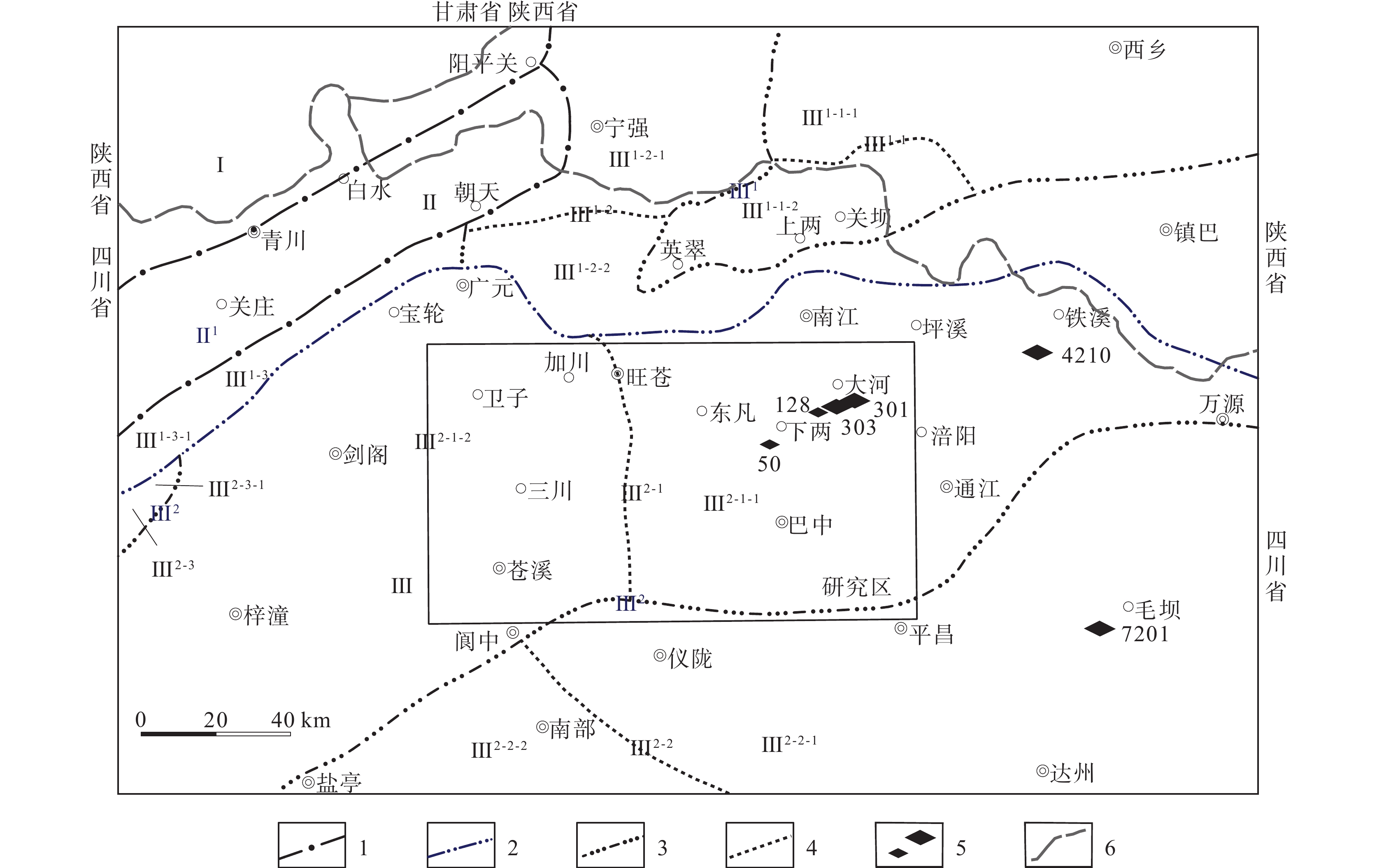
 下载:
下载:
